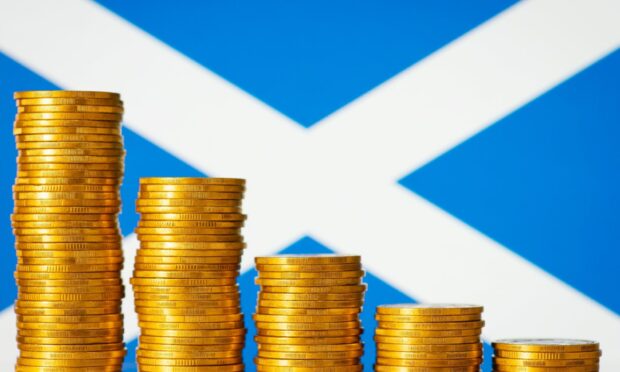A measure of the health of Scotland’s economy revealed that 2022 ended up in weak growth.
Scotland avoided entering recession at the end of 2022, with new figures showing the economy grew by just 0.1% in the final three months of the year.
After a 0.1% fall in GDP in the period July to September, another quarter of negative growth would have seen Scotland formally in recession – defined as two consecutive quarters of negative economic growth.
While the latest Scottish Government statistics showed that was avoided, monthly figures showed GDP was down by 0.6% in the month of December.
According to the latest figures, GDP in Scotland is still 0.3% below pre-pandemic levels recorded in the final three months of 2019.
CBI Scotland director Tracy Black said the economy had “ended last year on a subdued note”.
She added that “widespread strikes” had “exacerbated” economic weaknesses during the pre-Christmas period.
Ms Black added: “With pressures on household incomes from high inflation to persist this year, it’s set to be another challenging one for both Scotland and the UK as a whole.”
She urged the governments at Holyrood and Westminster to have a “razor-sharp focus on boosting growth” in 2023, adding that Scotland’s new first minister must “prioritise growth-enhancing measures”.
Deputy First Minister John Swinney said the new figures demonstrated the “resilience of the Scottish economy against the extremely challenging circumstances faced by countries around the world”.
But he added: “Despite recession being avoided last year, enormous pressures remain across both the private and public sectors.
“The cost-of-living crisis is impacting household and businesses’ ability to spend, which in turn affects the wider economy.
“Scottish businesses also continue to suffer due to the effect Brexit has had on supply chains, trade and the free movement of people, which has in turn had a significant impact on businesses in terms of staffing.”
He insisted the Scottish Government was doing “everything possible with the powers currently available to us to transform the economy in a way that delivers fairer, greener prosperity”.
However Mr Swinney stated: “Ultimately, this crisis has been worsened by the UK Government’s handling of the UK economy, which the IMF forecasts to contract this year – the only major economy in the world to do so.”
Scottish Secretary Alister Jack said while the economy had “proven to be more resilient than many feared”, there are “still challenges ahead”.
He said this was why the UK Government was making it a priority to halve inflation, reduce debt and grow the economy.
The Tory UK Government minister continued: “We are providing immediate vital support to ease the cost of living, providing help for those most in need by increasing benefits and pensions in line with inflation and raising the National Living Wage.
“This is in addition to extra help with energy bills and on top of an extra £1.5 billion for the Scottish Government to help support public services in Scotland.
“Achieving sustainable growth for our long-term future is a priority. To make that happen, we’re investing more than £2.2 billion levelling up communities across the country, including our hugely successful City and Regional Growth Deals.
“The two new Freeports announced for Scotland in January will boost trade and create high-quality jobs to benefit all of Scotland and the whole of the UK.”

Conversation